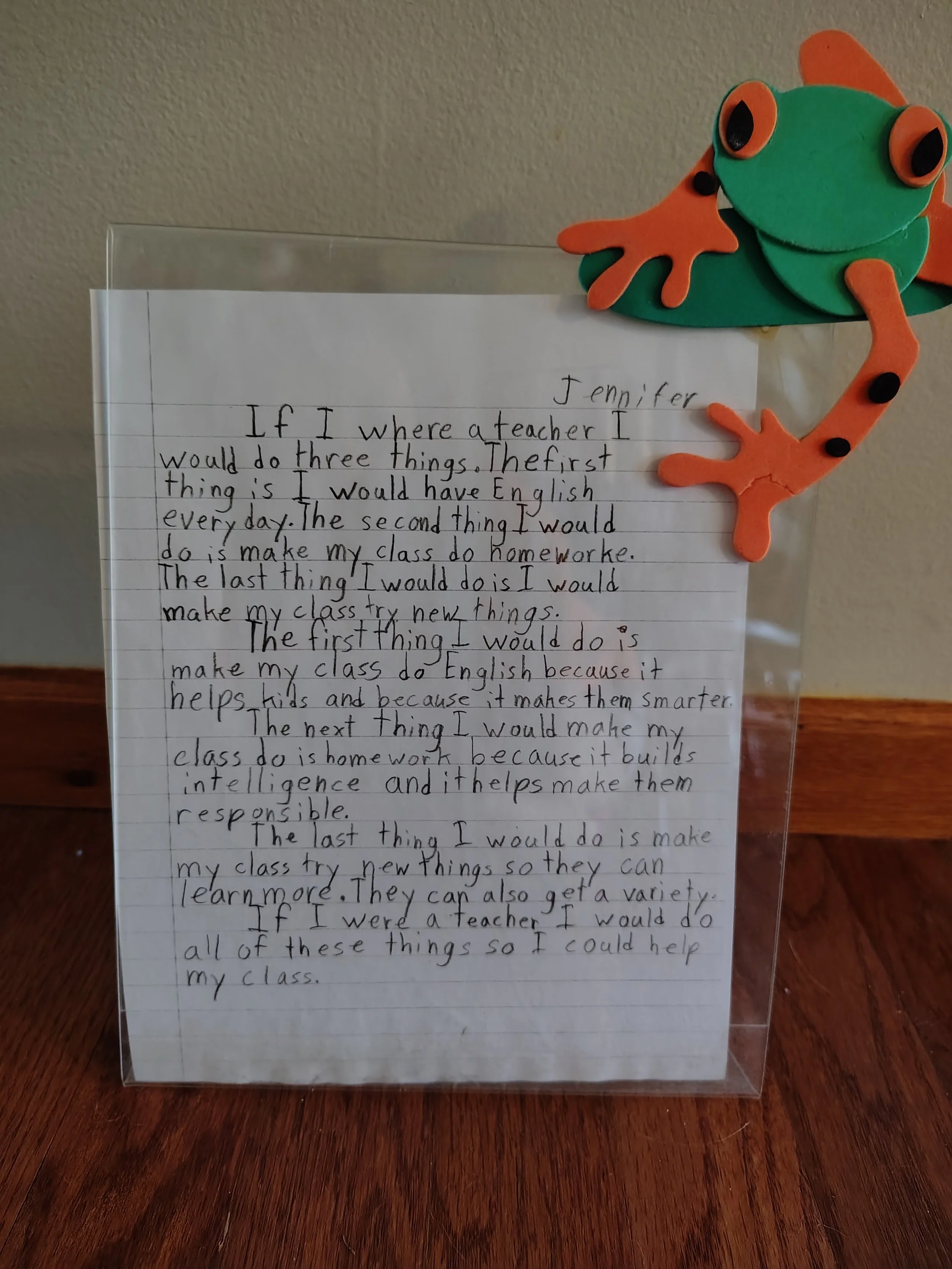
Blog
Our blog provides readers an opportunity to hear from the Advance Illinois staff and partners on education policy issues affecting Illinois students and beyond.
Federal Impact—Resilient in the Face of Cuts
When Jennifer Smith was a third grader, she had a clear view of the priorities that would drive her as a future teacher.
She would hold English everyday – less so the language, she explains, but for the skills language arts cultivate and exercise in critical thinking, grammar, in analysis, in effectively communicating.
She’d give homework, “because it builds intelligence and makes (students) smarter,” she said in a short essay she had written as an elementary school student.
And she’d make sure her class tries new things, “so they can learn more. They can also get a variety.”
Decades later, Smith still holds onto these concerns (and has accumulated others), today working as a middle school science teacher who believes education should be immersive, relevant, and empowering. And her prescient essay has come along, too, often found in her classrooms over time.
In recent months, however, federal funding cuts have made it increasingly difficult for her to maintain the high standards she sets for herself and her students. She persists, nevertheless. Three professional development (PD) programs she was scheduled to attend this summer—focused on social-emotional learning (SEL), bioengineering, and science instruction—were canceled due to revoked grant funding from the National Institutes for Health and the National Science Foundation. One research project in particular would have explored literacy in the science classroom. These PDs weren’t just enrichment; for someone who pours hours into preparing for lessons, they are essential to Smith’s teaching practice of making science real and relevant for her students.
“When those opportunities disappear, it’s not just me who loses, it’s them,” she said.
Her approach to teaching is deeply hands-on and inquiry-based. She teaches 6th and 7th grade science from a portable classroom with no running water, yet she still manages to conduct full lab experiences including dissections and hydrology experiments by coordinating with colleagues to borrow lab space during their prep periods. Where another teacher might throw their hands up in such a predicament and stop doing labs, Smith is determined that her students have the full experience.
Smith also regularly collaborates with university researchers at the University of Illinois, inviting them into her classroom to expose students to real-world science and career pathways. “I don’t know what tech will look like in five years,” she said, “but if I can connect my students with people and places, those relationships will be stronger than even the academic experiences I could give them.”
As a virtual mentor for new teachers across Illinois, Smith along with nearly 300 other educators were shocked when the federal government announced it was rescinding its extensions for ESSER dollars, which funded the initiative. This meant the state could no longer pay its mentors despite the agreement they had signed. Smith and her colleagues worked from March through May without compensation.
Only in recent weeks were they notified that they were going to get funding after all, receiving pay for the time they had worked. Smith, a single mother of two teenagers who is constantly juggling multiple hats and jobs, was fortunate to have not relied on the mentoring income for survival but knows that was not the case for everyone.
Despite the pressures, Smith remains committed to education. She holds three master’s degrees, is National Board Certified in science, and is currently pursuing her doctorate. She spends her summers writing curriculum, mentoring future educators, and attending PDs, when they’re not canceled. “Everything I do, even my side hustles, is about education,” she said. “Because my kids need to eat, but also because I believe in this work.”
Still, the emotional toll of the federal changes and their impact cannot be avoided. “It’s demoralizing,” Smith said. “Every week I open my email and brace myself for more bad news. I’m doing everything I can to keep the same opportunities for my students, but at what cost?”
It is the belief that small actions can make a difference that keeps her going. “I try to find one thing each day that can have a positive impact—so my students know I care, and my community knows someone is listening.”
Bravetta Hassell is Director of Communications for Advance Illinois.
ISBE’s New EBF Spending Plan Report: Here’s What to Know and Why It’s Important
Since the Evidence-Based Funding (EBF) plan was passed in 2017, Illinois has invested nearly $2 billion dollars in new state funds in K-12 public education through the formula, and now eight years later the Illinois State Board of Education (ISBE) has released the Evidence-Based Funding Spending Plan Report: July 2024, an exciting new report that adds to the growing understanding of how these new funds were spent across the state.
Research shows that money matters in education and that evidence-based, sustained investments in our students on things like reducing class sizes, adding interventionists, and providing student wellness supports have direct impacts on students’ outcomes. So it is no surprise that advocates and lawmakers have long been eager to see how these substantial new investments through EBF are being spent in schools. We saw early indications of how strategically districts were investing these new dollars through the EBF 5 Year Evaluation released in 2022, but that report looked at a small subset of districts.
A key part of the EBF legislation requires district to complete, as part of their annual budget submission, an EBF Spending Plan that describes the strategic investments they intend to make with state funds and their process for determining these allocations. Since their implementation in 2018, while community members could explore each individual district’s plan separately, making sense of the spending plans at the state level was not possible.
This year’s report is the first time that we are able to see the state’s findings on how districts across the state invested the new tier funding from FY2025. A few highlights of the report:
School districts were most likely to prioritize improving programs, curriculum, and learning tools or expand pupil support services like social workers.
Districts engaged with a variety of stakeholders to inform allocation of new EBF dollars – with principals, special education program directors, and school board members as the most frequently cited.
District leaders most frequently used educator shortage, retention, and recruitment data to assist in prioritizing new funds.
Core Teachers, Specialist Teachers, and Instructional Materials were the three most common investments.
On average, districts spent 71% of Tier funding on core investments (i.e., core teachers, instructional facilitators, nurses, etc.)
District leaders most often invested funds designated for English Learners (EL) in EL Intervention Teachers and EL Pupil Support Staff (i.e., nurse, social worker, family liaison personnel, etc.)
The Evidence-Based Funding (EBF) Formula helps the state understand what a district needs to adequately and equitably support their students and bolster student outcomes. The evidence that undergirds the formula is clear: smart investments rooted in the research can have clear and meaningful impacts on students. The EBF Spending Plan Report and individual spending plans allow for community members to identify whether districts are investing their resources in the most strategic way and engage more fully in the budgeting process.
“The EBF Spending Plan report and individual spending plans allow for community members to identify whether districts are investing their resources in the most strategic way and engage more fully in the budgeting process. ”
As we move into budget season, it is more important than ever to dig into the wealth of information we have at our disposal – district spending plans, statewide reports, the ISBE Report Card – and urge both state leaders to continue increasing investments in EBF and district leaders to highlight the powerful work being done with these investments.
In a new Funding Illinois’ Future blog, learn how Illinois educators are accessing ISBE’s spending plan tool to understand how new EBF dollars are being invested in their districts.
Kelsey Bakken is a Senior Policy Advisor for Advance Illinois.


